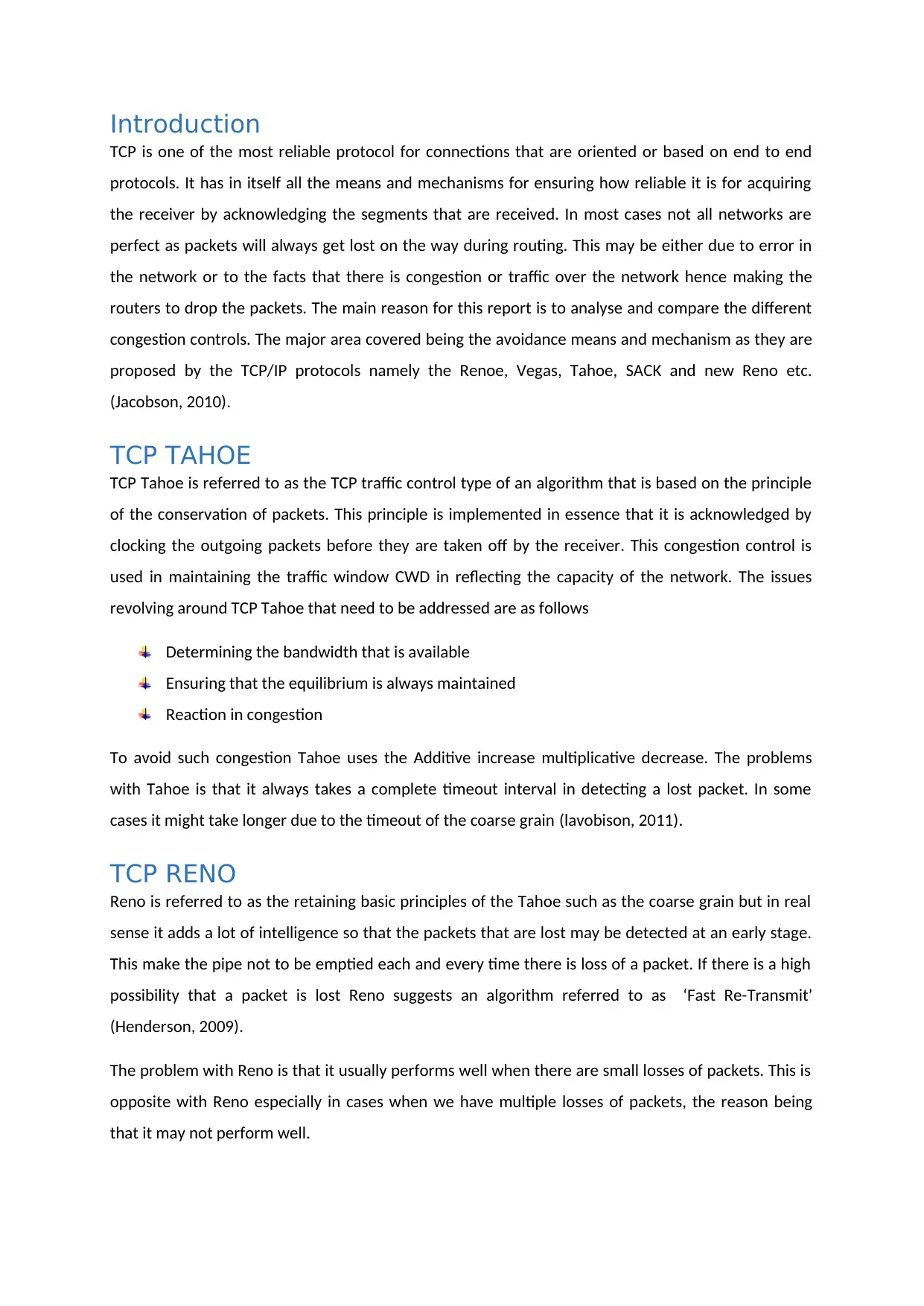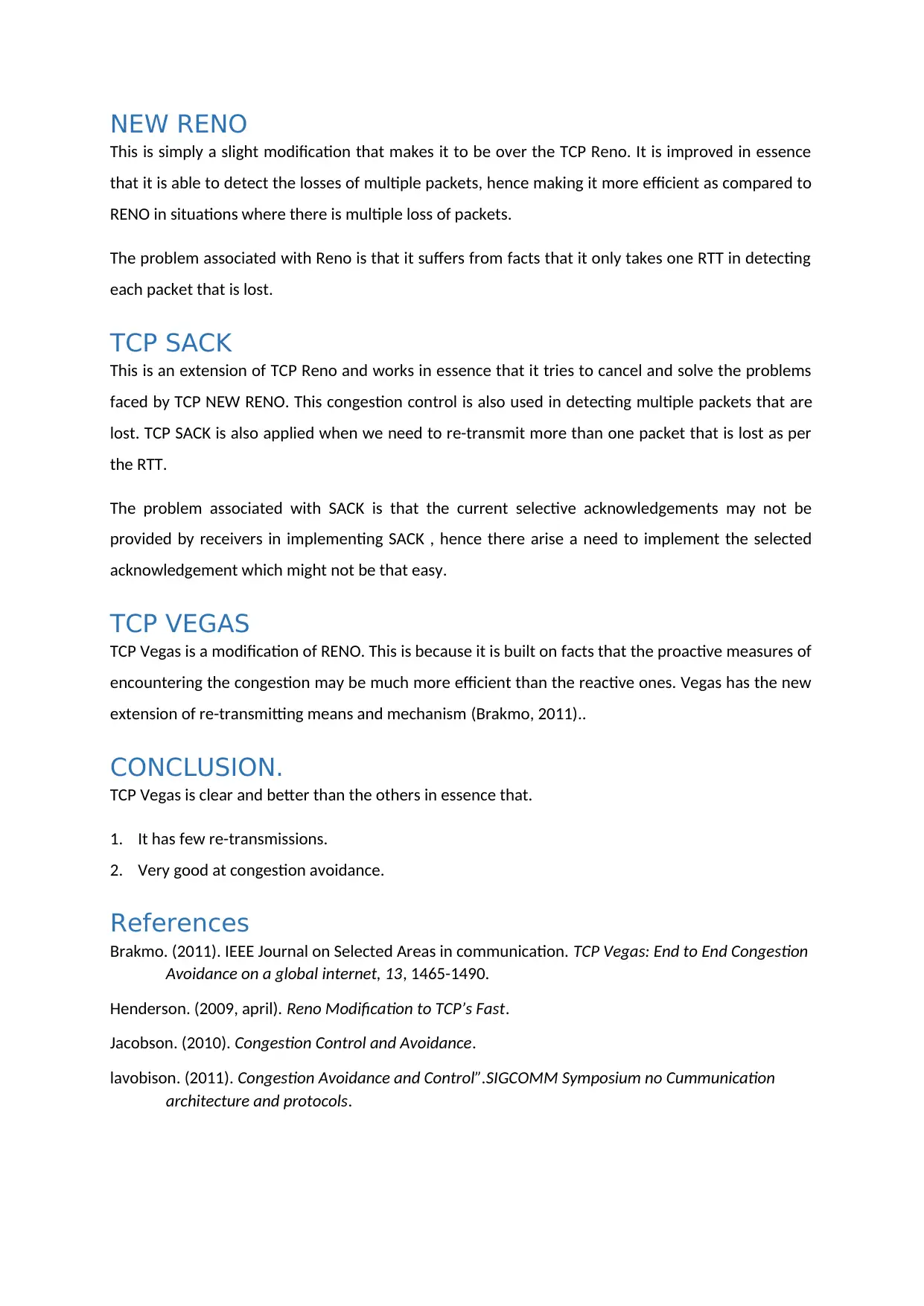TCP Congestion Control Algorithms: A Detailed Analysis and Comparison
VerifiedAdded on 2020/05/04
|3
|805
|131
Report
AI Summary
This report provides a comparative analysis of several TCP congestion control algorithms, focusing on their mechanisms for avoiding and managing network congestion. The report begins with an introduction to TCP and its role in reliable data transmission, highlighting the challenges posed by packet loss and network congestion. It then delves into the specifics of each algorithm, including TCP Tahoe, which uses a conservation of packets principle, and TCP Reno, which adds intelligence to detect lost packets early. The report also covers TCP New Reno, an improvement over Reno for multiple packet losses, TCP SACK, which addresses the limitations of New Reno, and TCP Vegas, which takes a proactive approach to congestion avoidance. Each algorithm's strengths, weaknesses, and operational details are discussed, and the report concludes with a summary of the performance and suitability of each algorithm, emphasizing the advantages of TCP Vegas in terms of reduced retransmissions and effective congestion avoidance. The report references key literature to support the analysis.
1 out of 3







![[object Object]](/_next/static/media/star-bottom.7253800d.svg)